Fokker Dr.I camouflage
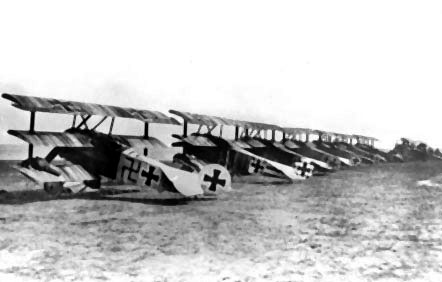 The triplane was done with a single coat of clear dope overall. The upper surface may, in fact, have had a second coat but this is doubtful. Colors were then applied to the top surface as a wash and it is apparent that this comprised a linseed oil varnish acting as a base to which was added dark olive brown.
The triplane was done with a single coat of clear dope overall. The upper surface may, in fact, have had a second coat but this is doubtful. Colors were then applied to the top surface as a wash and it is apparent that this comprised a linseed oil varnish acting as a base to which was added dark olive brown.
It would seem from the appearance of the fabric that this pigment was basically insoluble in the varnish. The mixture was applied to the various surfaces using a hand brush in single long strokes, the length of a stroke being the width of the component being painted. There is no evidence of brushing out or back strokes. It would seem that the brush was nor replenished at each stroke but was used for consecutive strokes until near dry. This method gave rise to the streaked appearance of all Fokker triplanes. From examination of the fabric it would seem that the brush used was probably 8 cm wide as this is the apparent width of the streak cycles. It will be seen from the photos that the streaks were not directly chordwise on wings and tailplane but were angled by different amounts. This may have been a deliberate attempt to give a disrupted appearance to the assembled aircraft and this put an enemy pilot off his aim.
 The underside color was a turquoise blue and unlike the top surface coloring, this was a solid color and covered completely of the underlaying fabric. It was added in the form of solution of dope plus pigment and in this case appears to have been completely soluble. When dry it was overpainted with a coat of lightly pigmented linseed oil varnish. Both surfaces had a semi gloss appearance. Painting of various sub items did vary slightly and for example, the wing struts were on occasion either natural varnished wood, undersurface blue or top surface olive brown. Undercarriage and centre section struts were normally olive brown. Wheel discs were also usually this color but on occasion were blue. The standard color of the engine cowling is not positively known but it is fairly certain that this was also olive brown. Whatever color it is, it was dense and the metal was completely covered with no streaking.
The underside color was a turquoise blue and unlike the top surface coloring, this was a solid color and covered completely of the underlaying fabric. It was added in the form of solution of dope plus pigment and in this case appears to have been completely soluble. When dry it was overpainted with a coat of lightly pigmented linseed oil varnish. Both surfaces had a semi gloss appearance. Painting of various sub items did vary slightly and for example, the wing struts were on occasion either natural varnished wood, undersurface blue or top surface olive brown. Undercarriage and centre section struts were normally olive brown. Wheel discs were also usually this color but on occasion were blue. The standard color of the engine cowling is not positively known but it is fairly certain that this was also olive brown. Whatever color it is, it was dense and the metal was completely covered with no streaking.
 The national insignia, normally of sub standard size, were applied as shown to white panels above the wings and on the fuselage sides. The rudder was normally all white and the cross was painted on to this. The underwing cross poses a problem in that it has always been assumed that this was painted, not on to a white panel, but, directly as a black cross on to the blue undersurface. Recent evidence indicates that this may have been true of some machines other in factory finish carried their underwing cross on clear varnished fabric panel. An example of this was Dr.I 187/17 of Jasta 27.
The national insignia, normally of sub standard size, were applied as shown to white panels above the wings and on the fuselage sides. The rudder was normally all white and the cross was painted on to this. The underwing cross poses a problem in that it has always been assumed that this was painted, not on to a white panel, but, directly as a black cross on to the blue undersurface. Recent evidence indicates that this may have been true of some machines other in factory finish carried their underwing cross on clear varnished fabric panel. An example of this was Dr.I 187/17 of Jasta 27.
Cockpit interior were sparsely furnished but none the less cramped. There was no instrument panel at all and what instruments there were clamped low down on the fuselage vertical members so that they could be read with a quick glance downwards. The seat was an aluminum “bucket” mounted on a tubular steel frame. The rear of the fuselage was screened from the cockpit by a sheet of fabric laced into position behind the seat. The interior color of the cockpit would be an off white or pale cream, the color of doped fabric.
Paul S. Leaman
Photos- Cross&Cockade Color profile- Srecko Bradic

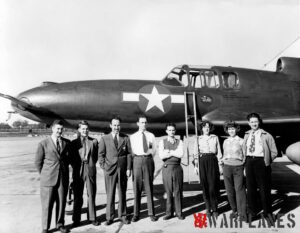
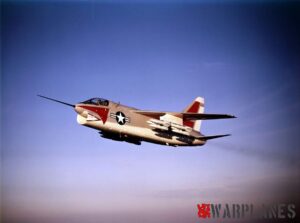
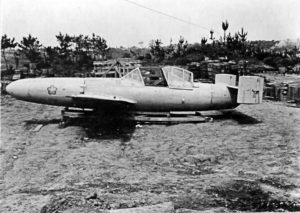


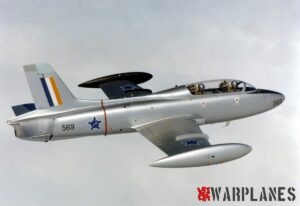
One of those Fokker Dr.I have a swastika on its side. If you think of Germany by that time, it is a great coincidence.
It’s the original design of the swastika, apparently spinning counter clock wise.